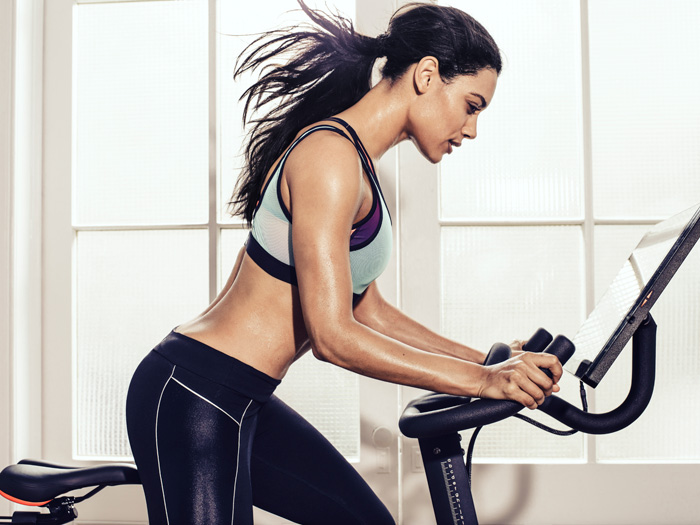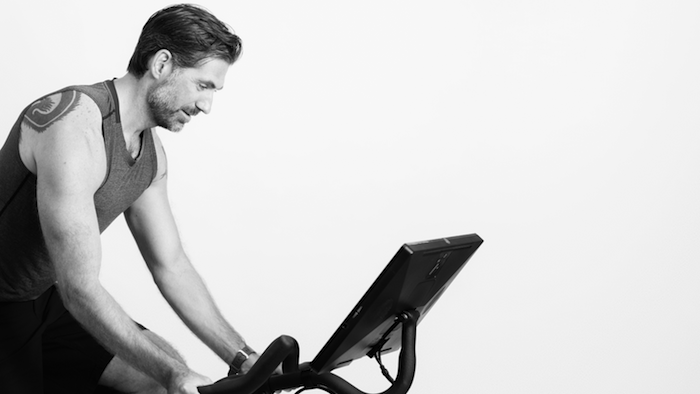7 Things You’re Doing Wrong in Spin Class (and How to Fix Them)
 Thanks to the fast-paced, push-you-to-your-limits, and forget-your-worries nature of a spin class, it's easy to let everything go—including proper technique—the moment you jump on bike and the music grabs you.
Thanks to the fast-paced, push-you-to-your-limits, and forget-your-worries nature of a spin class, it's easy to let everything go—including proper technique—the moment you jump on bike and the music grabs you.
But when it comes down to it, your attention to (or disregard for) form and other best practices will determine whether you're basking in sweaty endorphins afterward, or nursing a strained muscle.
"Preventing injury is part of every workout," explains top Peloton coach Steven Little, a serious indoor cycling pro who was one of Flywheel's founding instructors and has been teaching spin for close to nine years. "We tend to work hard and sometimes try to do everything and not listen to our bodies."
And if you're not as seasoned or have had instructors who don't cue for good form, you may not even know you're doing it incorrectly or inefficiently, he says.
To make sure you're riding right, we asked Little to break down the common mistakes riders make in class, and how to fix them, so you get the most out of every sweat session. And we're pretty sure you want that to happen if you showed up at 7:00 a.m. —Amy Marturana
Here are the seven things you may be doing wrong in spin class, and how to fix them:
1. Tensing your shoulders. We know the ride is intense, but that doesn't mean your posture should be, too. Relaxing the shoulders is "a really common thing instructors remind riders of throughout class," Little says. You want to sit up straight, back comfortable and not over-arched, and avoid drifting over the front of your handlebars. But you should also keep your shoulders relaxed, not up by your ears, and look straight ahead, not down at your feet, to avoid unnecessary strain (and potential injury) in the neck and back.

{{post.sponsorText}}
More reading: How Peloton plans to revolutionize spinning—at home
2. Rocking your hips. Make sure you're engaging your muscles, so your movement isn't choppy, and so you're not putting pressure on the hip flexors. "You want to isolate the hip movement," he says. Make sure you're engaging your core fully, and focus on stabilizing your trunk and keeping the movement in your legs to avoid bouncing around too much.
3. Holding your breath. When the going gets tough "a lot of people have the tendency to hold their breath," Little explains, and find they can't hold an interval for long because they're not breathing. You need to continuously breathe to give your muscles energy—and so you don't pass out and topple off your bike. Breathe in through the nose, out through the mouth. After consciously remembering to do it for a while, it'll become more natural.

4. Only using your quads. "When going at a slower pace with more resistance, people tend to forget to pull up with the hamstrings," says Little, and instead they just focus on pushing the pedals down with their quads on hills. By ignoring the pulling movement, you're tiring your legs out sooner. (Important fact!) Using more muscles to move will keep you balanced and give you more power to push through. "I also encourage riders to use the glutes and core as well," to keep the pressure out of the lower back and more distributed throughout your body.
More reading: At this New York City spin studio, the bikes are in a pool
5. Skimping on resistance. "If resistance is too light, knees have a tendency to flare out," Little explains, and you're missing some of the muscular engagement on your joy ride. Other signs you're going too easy on yourself: choppiness in the pedal stroke, or your butt is bouncing a lot in the saddle.
6. Holding the handlebars with a death grip. You should have a light touch on the handlebars. "Rest palms in each hand position without having a tight grip," Little suggests. When you're holding a hand position for a while, like during a steep climb, the monotony can get tiring, he explains. "And the more we move our hands around, the more we can keep that tension out of our shoulders."
7. Skipping stretching. If you're one of those who bolt right after the ride ends (he sees this often in New York City), try to hang around for just a few extra minutes to stretch. "It’s nice to release tension from the hip flexors and allow the body to recover," says Little. "A lot of people skip stretching, and I think it really determines how you perform the next day."
For more information, visit www.pelotoncycle.com
(Photos: Peloton)
More reading: Does spinning lead to bulky quads?
Loading More Posts...